Keep It Clean, With A Clearing Cast
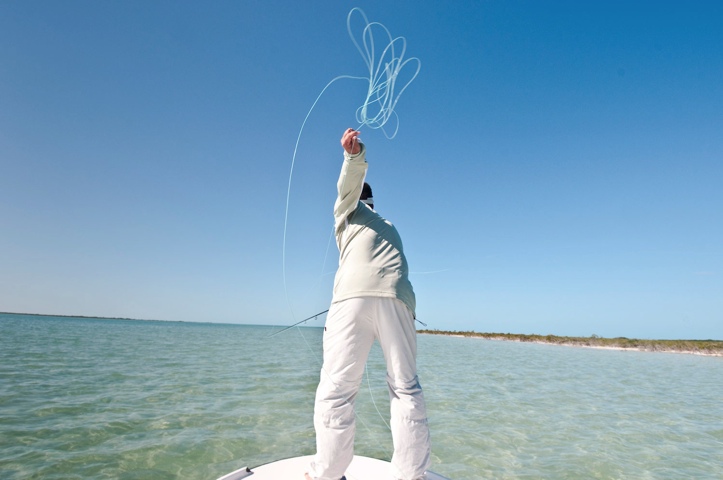
I’ve heard salt water fly fishing described as long periods of boredom punctuated by brief periods of panic.
I don’t know that I find staring at miles of gorgeous flats boring but I’ve felt that panic a time or two. It’s a stalking game and when the fish show up, shit happens fast. You often only get one shot and the last thing you need is a line maintenance issue. That’s why you need to make a clearing cast.
Start by striping as much line as you can cast off of your reel on to the deck. Because the line you are pulling off of the reel stacks on top of the line coming form the guides, when you try to cast you will be shooting line from the bottom of the pile and it will tangle every time. Like in the photo above. Not what you want when your casting to a fish and certainly not once you’ve fed one. So before you
Read More »Catching Big Trout Sometimes Takes Multiple Attempts
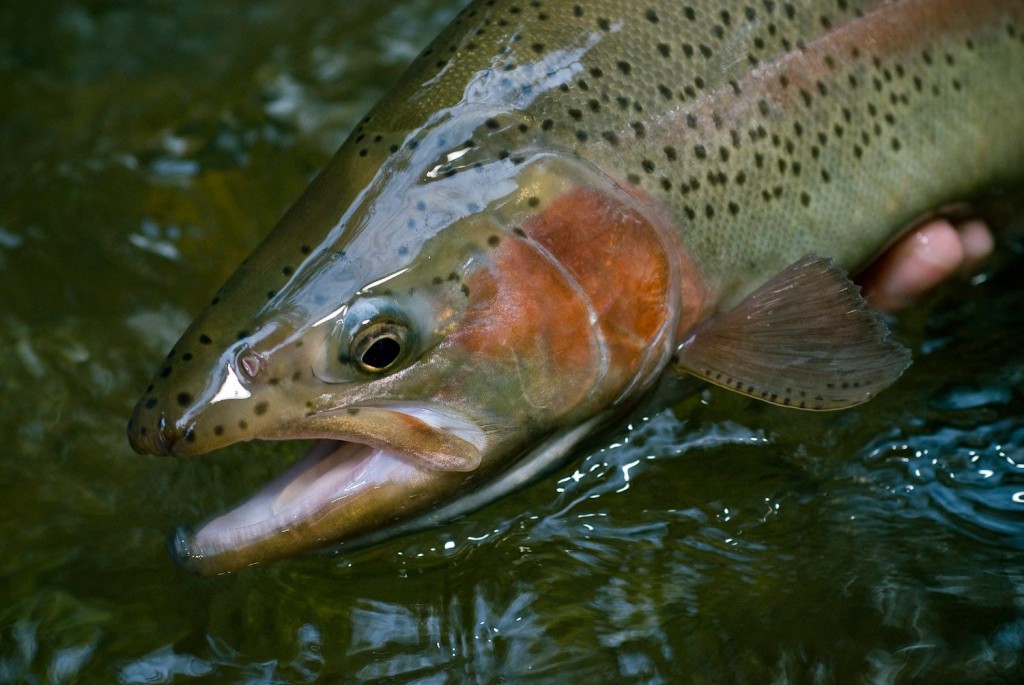
Several times this past year guiding, my clients would miss a big fish opportunity during our fishing trip.
Sometimes it would be because of a poor hook set, other times, it was completely out of their control by last second refusals or turn offs from the big fish. We’d always make several more casts and try using different flies, but most of the time the big fish would have already caught on and would ignore our offerings despite perfect presentations. Without giving up on the cause I would tell my clients, “no worries, let’s come back later in the day and give that big fish another go”. Not always but quite often, we’d come back and catch that big fish the second time around. When we were fortunate enough for it happened it was the most thrilling guiding for me, and my clients couldn’t have been more pleased and proud of themselves.
If you find yourself wading a river or stream and spot a big fish but don’t catch it, don’t accept defeat, let the fish cool off and come back an hour or two later for a second shot. If you do everything right, most of the time you stand a very good chance at catching the trophy. This simple fly fishing tip, is overlooked by a lot of anglers and it’s paid off for me time and time again throughout my years guiding. Don’t be
Read More »The Tao of Permit
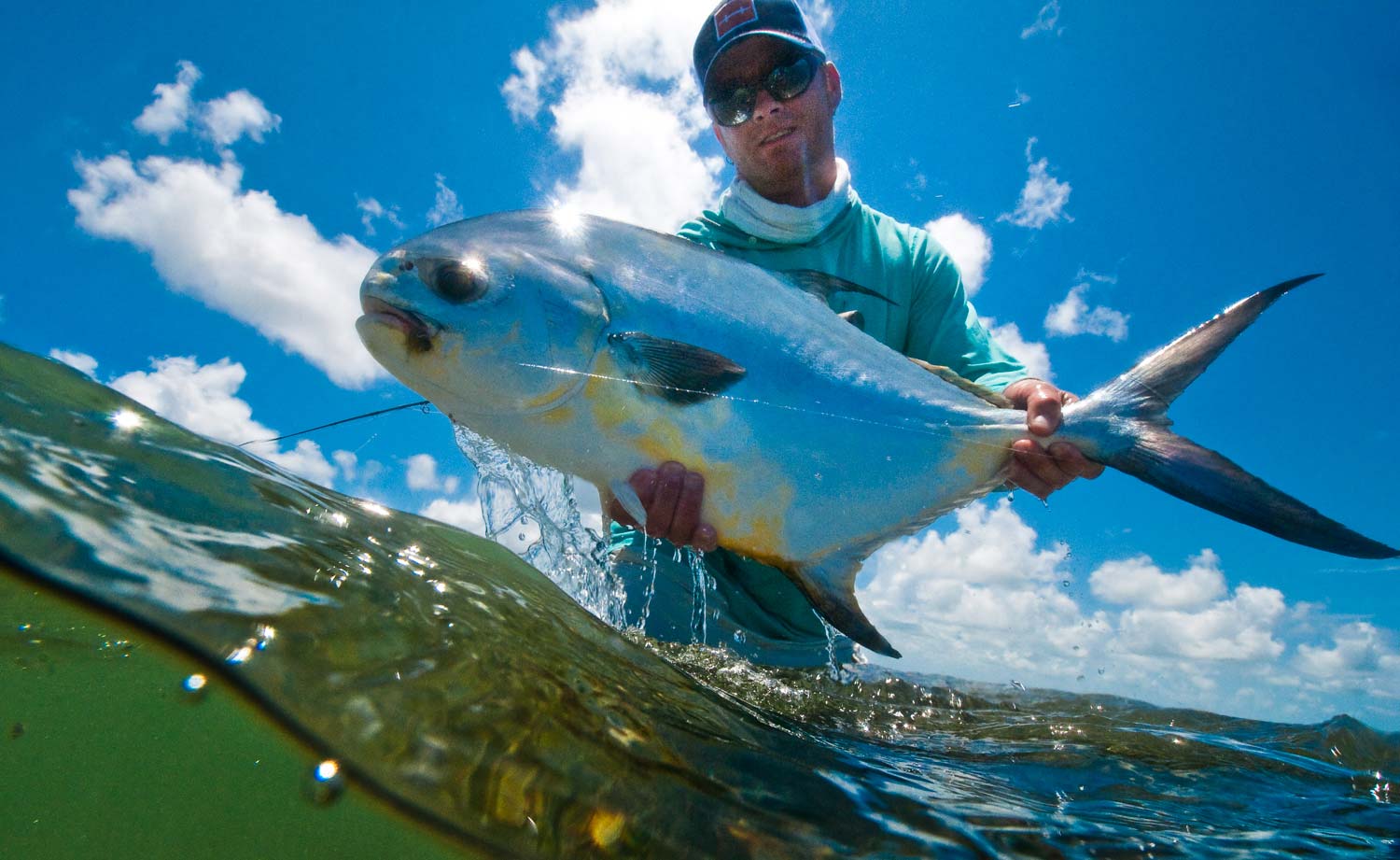
By Louis Cahill
What does it take to be a good permit angler?
At the park it was a beautiful day. Three days in a row I had taken my nine weight Helios 3, my snow saucer and my dog down the hill to the long promenade lined with oak trees and carefully stepped off my casting distance. Starting off at forty feet, I’d drop the bright pink yarn into the saucer again and again, then step off ten more feet. I’d cast at fifty, sixty, seventy feet, each step hitting the saucer a little less frequently. At eighty and ninety feet I’d be happy just hitting it a few times. I would have liked to had a few more days to practice before heading to the Keys, but my casting tuned up quickly and I was feeling pretty confident. I focused all of my energy on accuracy. I’d be spending three days with my buddy Bruce Chard looking for permit, and in permit fishing, accuracy is everything.
At the park it had been a beautiful day. Hurricane Michael had blown through just a few days before and we were enjoying the sunny, crisp, bluebird days on the back side of the storm. On the bow of the skiff, in the Keys, things were slightly different. The wind howled thirty miles per hour. It was a challenge just standing on the skiff, must less casting, and poling was a nightmare. Controlling the boat and making a well planed and executed shot was impossible. Every time a fish showed itself felt like a frenzied hail Mary. I’d never take off on a trip without practicing my casting, but those days in the park had nothing to do with this.
I don’t get to do a lot of permit fishing. I enjoy it, I think. It’s a love-hate relationship for sure, but for a handful of reasons it’s just very hard for me to devote the time and money it requires. Like no other type of fishing I know, permit fishing requires time. Permit just don’t eat the fly very often. Even if the angler does absolutely everything right, the vast majority of shots will end in refusal, or more often the fish fleeing in terror.
Although permit anglers will spend incredible amounts of energy analyzing and debating the meaning of every twitch, dart, and fin flick of every permit they have ever cast to, most experienced anglers will admit they have way more questions about permit than they have answers. It may be those answers we are looking for when we pursue them, or maybe we just love abuse, but if you are going to chase permit, and keep your sanity, you have to accept that you are simply not in control.
Standing on the bow with a thirty mile per hour wind driving into my casting shoulder, I certainly have no illusion of control. I make some good shots, I make some epically bad shots, I stick the fly in my ass. My line blows off the boat and is swept under the hull, once it wraps around the plug. About half the time I manage a decent presentation and am actually in the game, but it’s a struggle every second, and the seconds go quickly. The wind pushes the boat across the flat at a clip and the fish are coming at us in a hurry. We spot a fish, turn the boat, make the shot, maybe the fish follows and then refuses. The whole process is over in five seconds.
Read More »Is 5-Minute Epoxy a Thing of the Past?
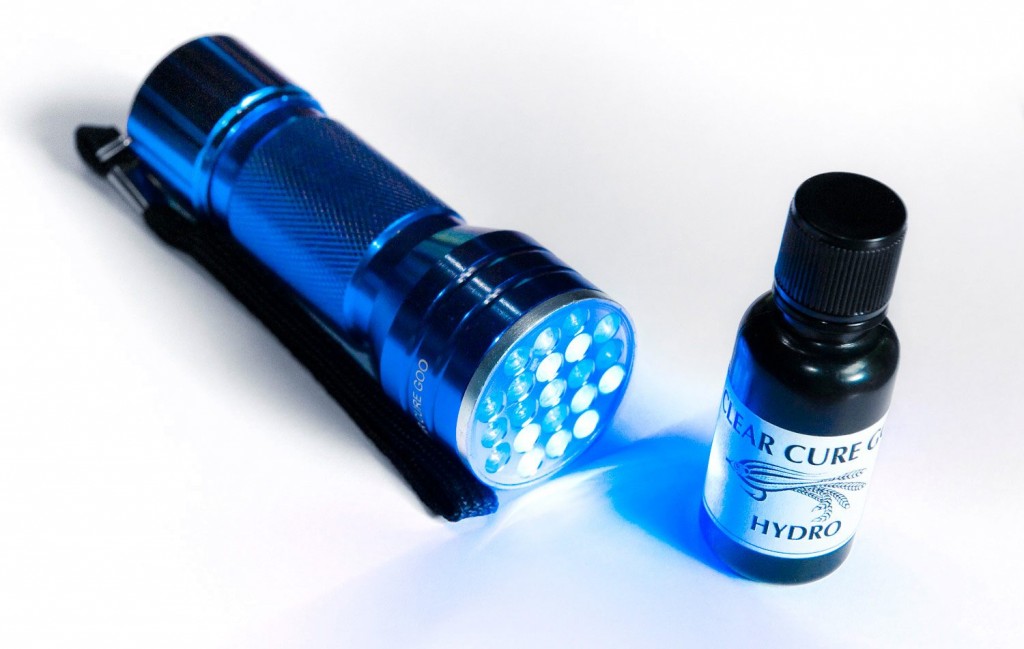
I CAN’T REMEMBER THE LAST TIME I HAD TO BREAK OUT MY SMELLY TWO-PART EPOXY BOTTLES AT THE TYING BENCH.
For several years, 5-minute epoxy was a mainstay in my fly tying. It worked great for molding my streamer heads, coating my popping flies and equally well for putting my finishing touches on the backs of my nymph patterns. Fast forward to present day, however, and epoxy has quickly become a thing of the past. In the eyes of most legitimate fly tiers, epoxy is nothing more than an old school tying material and technique that has become outdated. Innovative fly tying companies like Clear Cure Goo have taken the idea of epoxy and reinvented the wheel by introducing a full line of UV curing products. They serve the same purpose as epoxy but are less messy, more efficient and easier to work with at the vise. After using them, I now look at my life long stash of epoxy bottles on the bench and wonder if I shouldn’t just toss them all in the trash. I could use a little extra room on my tying bench anyway and I’m tired of looking at dried up epoxy patches with wooden stirring sticks adhered on scrap all over my work area.
If you haven’t yet tried or bought into the hype of Clear Cure Goo products, I suggest you test them out. Clear Cure Goo calls their UV curing products “the cure to epoxy”, because you’ll no longer waste time prepping your two-part epoxy for each fly you’re tying, you won’t feel rushed and you’ll have zero waste. Go ahead and keep that 18 rpm epoxy fly and jig turner around if you want just in case, but I’m putting mine on ebay for a few extra bucks towards purchasing more
Read More »Are You An Extreme Net Man?
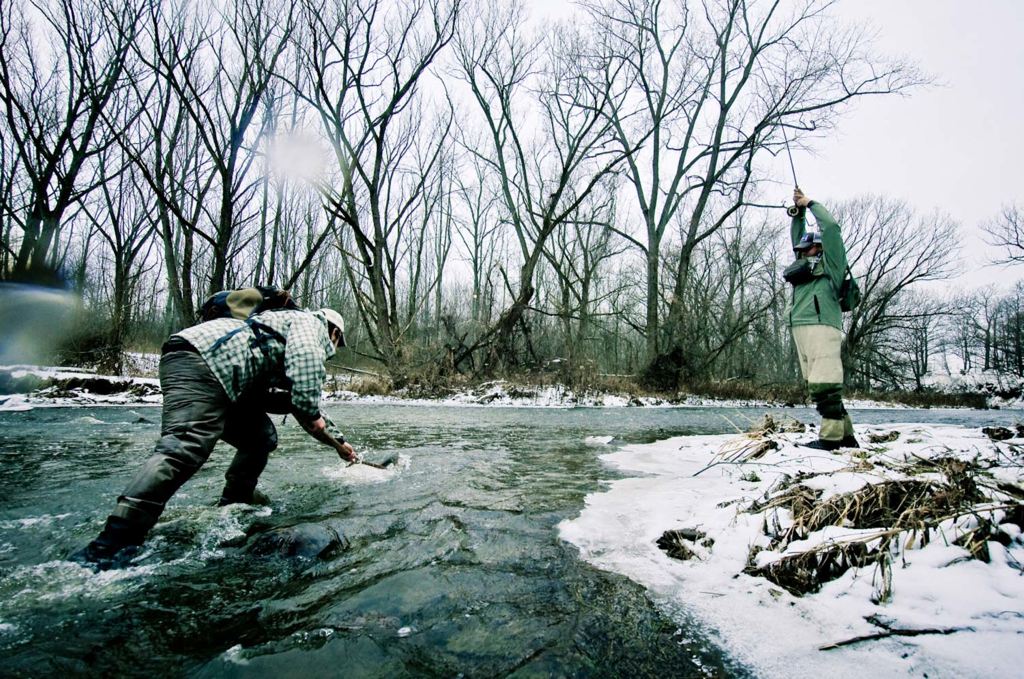
Have any of you seen those Rapala lure commercials with the fisherman in the store pondering over which “Extreme Net Man” to hire for the day. If you haven’t, take the next thirty seconds and watch this short video.
I love those commercials because they point out how important a role your net man can play in helping you land fish. A lot of the time props are only given to the angler battling the fish, but many times the experienced net man by your side deserves a good portion of those props. There’s no doubt that when fish and angler are evenly matched in a fierce battle, having an experienced net man can often end up putting the odds in the anglers favor. Many of my big fish have only been landed because I’ve been lucky enough to have a badass with a net backing me up. As a guide, I’ve had lots of time and practice to hone my netting skills over the years. And I’ve picked up on some key characteristics you need to carry with you at all times if you want to become worthy of holding the “Extreme Net Man” status.
And for the respect of both female and male anglers out there let’s consider the phrase “Extreme Net Man” to be uni-sex please.
1. An Extreme Net Man has an equally Strong Offense and Defense
You not only have to have an offense that’s deadly accurate at scooping up fish, but you also need to have a strong defense as well. A good defense means
Just When You Think Your Dialed In
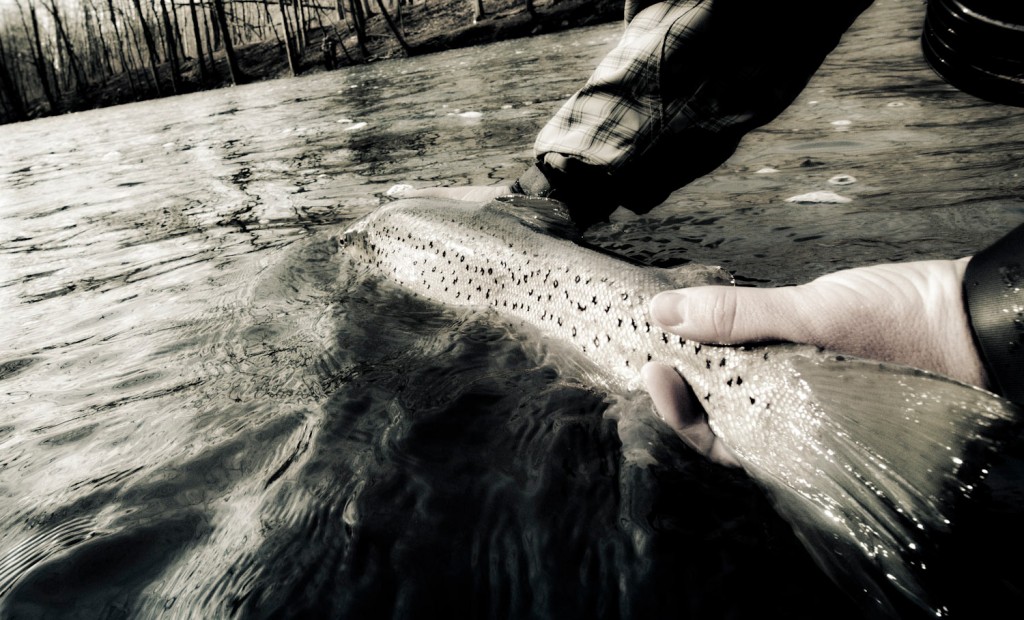
IT’S A NINETEEN HOUR DRIVE AND A THIRTY MINUTE WALK TO THE SPOT WHERE THE SYCAMORE TREE IS DOWN ACROSS THE RIVER, MAKING THAT SWEET SEAM.
Flies are tied in the truck on the drive up. The color and size that worked last year but with upgraded hooks. Rods and reels have been selected. New lines have been spooled up. Waders patched, hats, gloves, down vests all packed. We’re on the river less than an hour when the first big male brown goes in the net, followed by a nice steelhead. High fives and smiles all around, followed by a toast. We are dialed in, or so it seems.
The next morning we are reminded of a lesson we have learned time and time again. Fish are fickle, conditions change, you always work for your fish. We had gotten to feeling pretty good about ourselves that first day on the river, and why not, it had been awesome. We had come a long way from our home waters, to a very different river and we had fished like champs. The next day we got back to the business of being humble and figuring it out. By the end of the second day we had a few more fish in the net, but they didn’t come easy.
That’s the game isn’t it? Figuring it out. How long would we
Read More »Getting the Big Picture On Brook Trout
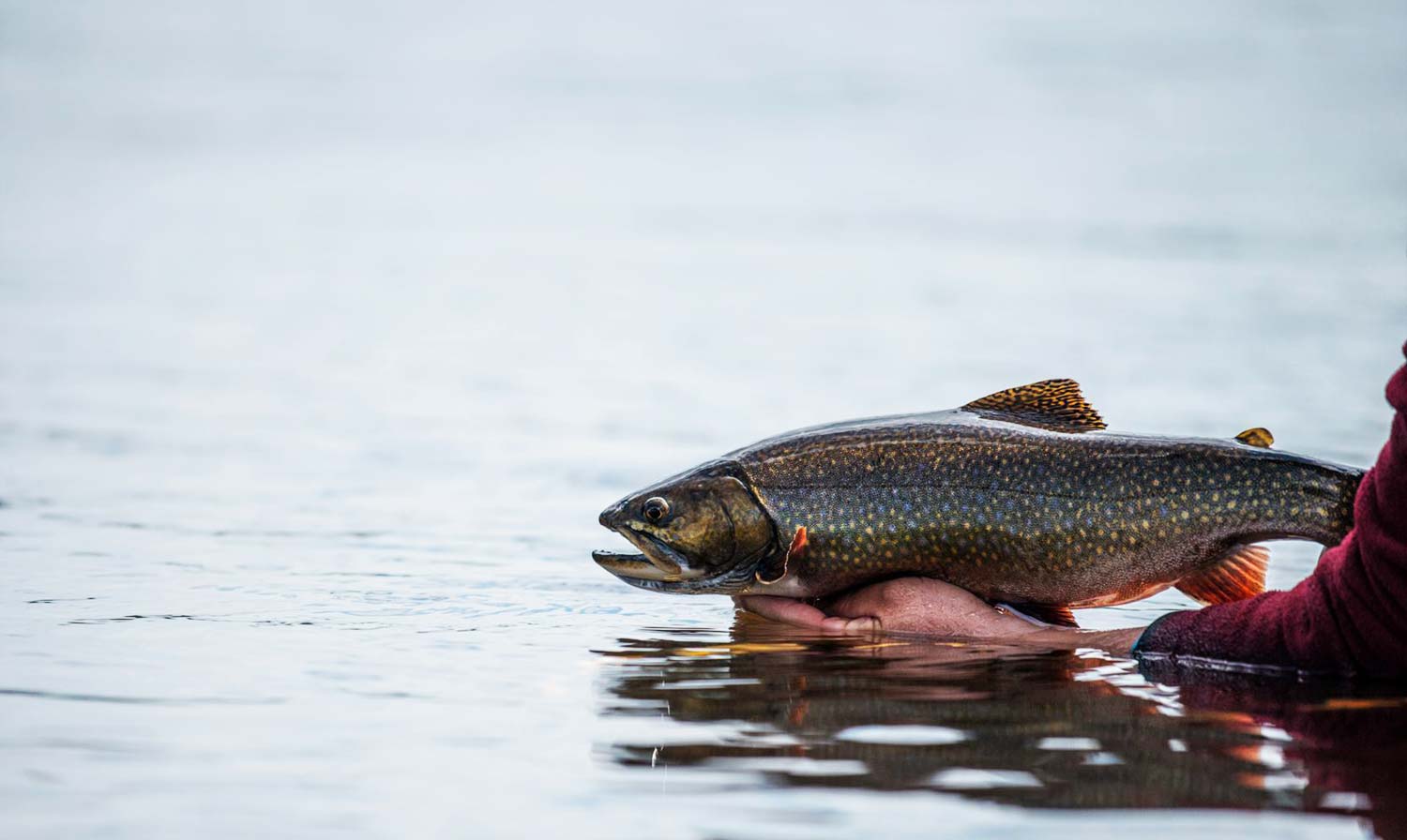
By Jason Tucker
I recently read an article on brook trout, about what beautiful delicate gems they are. It’s true for a lot of us that brook trout are a small, colorful, feisty reward for a day’s fishing. They are often some of the smallest fish we seek. They normally live in the smallest streams and creeks, or in the headwaters of our trout streams where it is easier to step across than wade them. Yeah, we’ve heard of bigger fish in far off destinations, but surely these are the exception, fish that through a series of happy accidents go against the grain and get unusually large.
That would be a complete misconception, and the small fish that most of us see and catch, at least in the United States, are fish holding on at the margins of their range, in remnants of water barely suitable for their existence.
It is impossible to understand brook trout without fishing for them in their Canadian strongholds. The small, delicate looking gems we are used to seeing in the United States are only representative of one form of the species. It is a truly remarkable adaptation that extends their range far outside of what it could normally be, but it doesn’t fully represent the species.
Living in a small, headwaters-dwelling form has distinct ecological and evolutionary advantages, allowing them to hang on in areas that have generally become unsuitable for them. In effect, brook trout are superbly adapted to Ice Age cycles, in which their northern habitat becomes unlivable every ten thousand years or so due to encroaching glaciation. Brook trout colonize the leading edges of the glaciers, which have taken them south, all the way into the Smokey Mountains of northern Georgia, a place that is otherwise inhospitable for brook trout. When the glaciers retreat, remnant populations are left in the few waters that remain cold and clean enough to harbor them, usually high up on the mountains. These small stream trout are usually quite small themselves, rarely reaching a pound in weight, and often living only about three years.
Their prime range however, covers a vast area of Canadian Shield country that runs from western Ontario, Lake Superior in the south, on up to Hudson Bay in the north, across all of Quebec, and on east to Labrador. In this region
Read More »Streamer Retrieves For Different Current Speeds
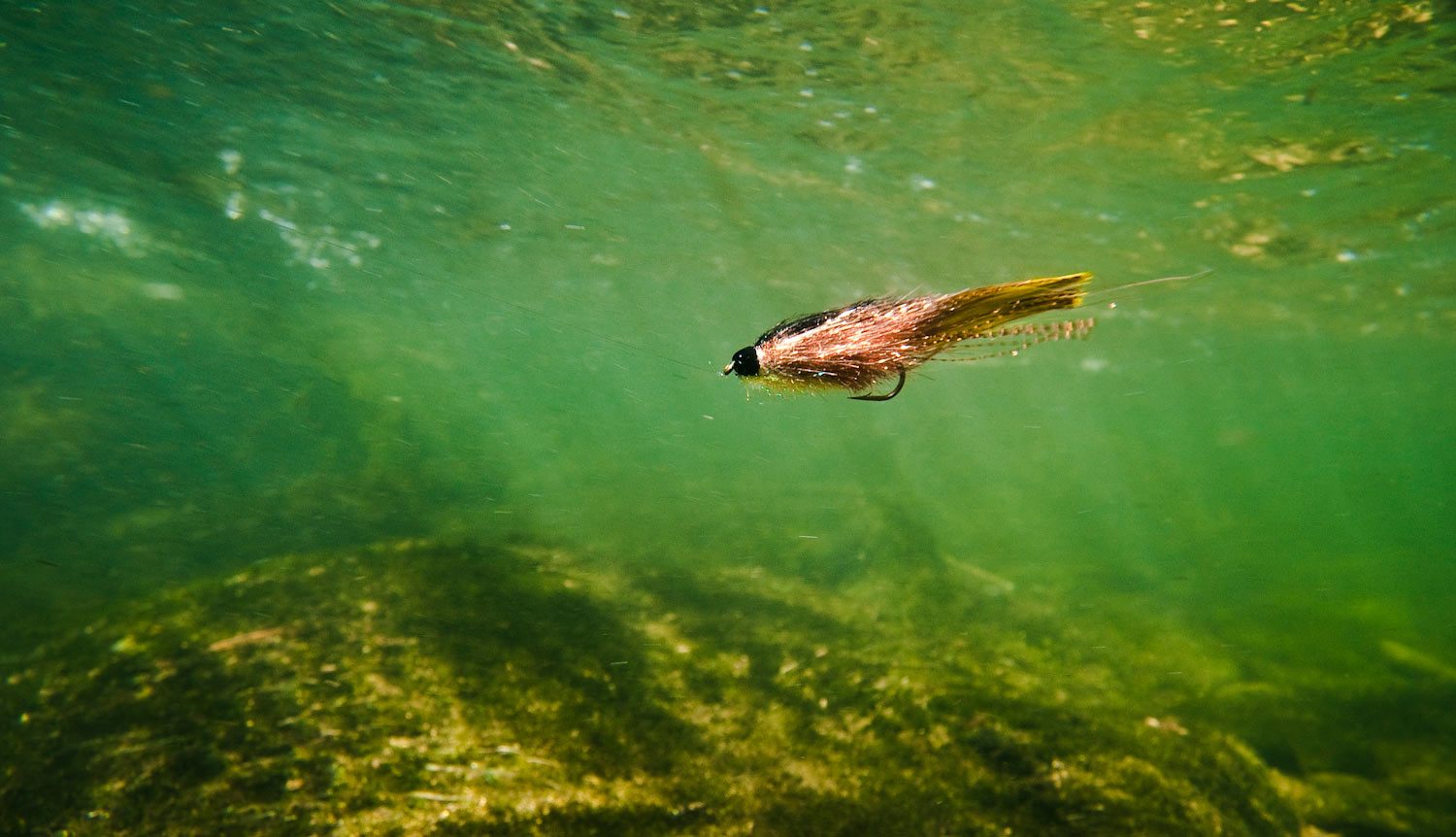
I’ve talked in great detail about streamer fishing since I began writing articles for Gink & Gasoline. Most of my time has been spent talking about color and pattern choice, streamer gear/rigging for both big and small water and how to locate and target prime trout water with streamers. One area of streamer fishing I’ve yet to talk about in detail is retrieve speed and candor with streamers.
Read More »Making Single Turn Trim Bands the Painless Way
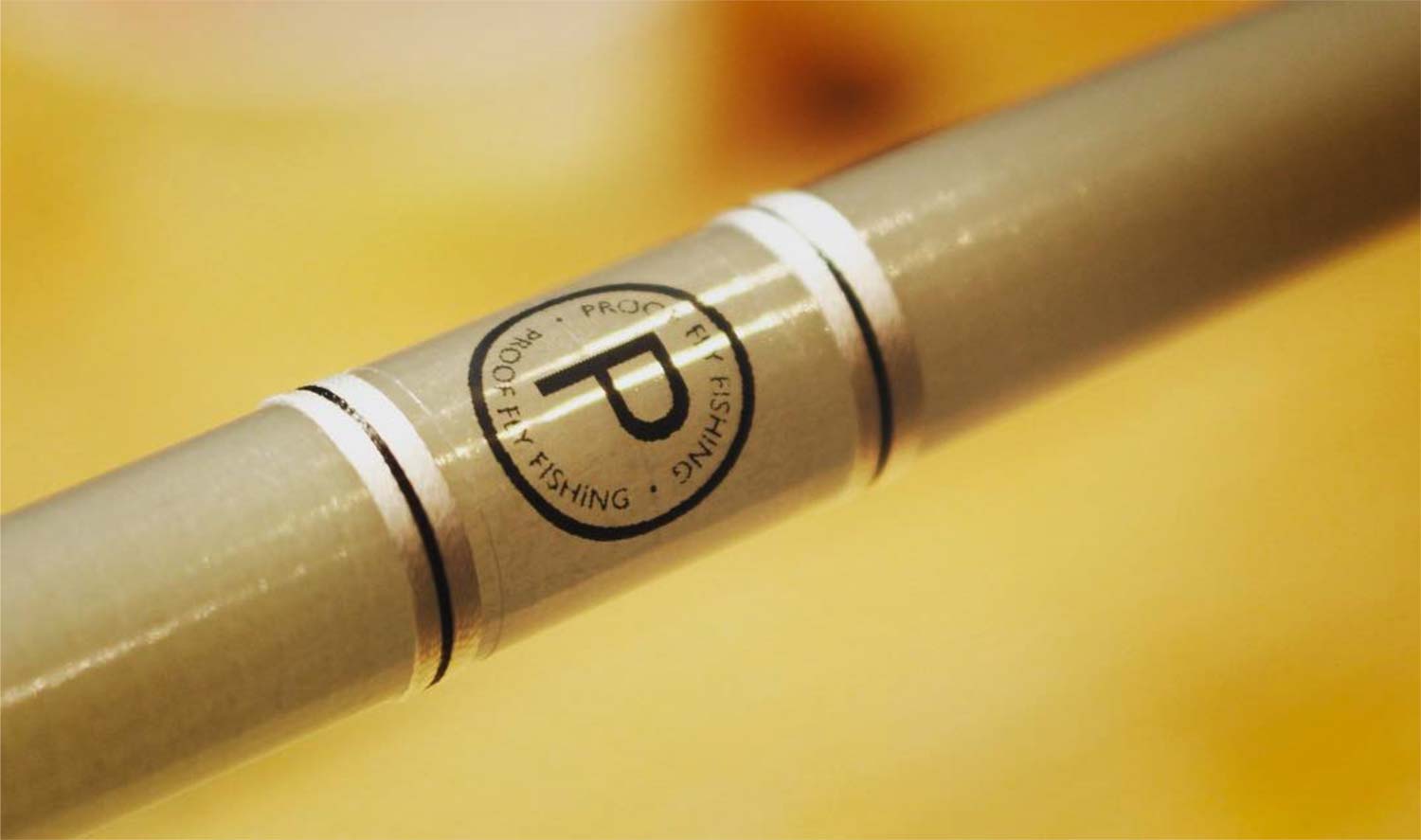
Have you ever seen a fly rod with elegant single turn trim wraps?
It’s a subtle and beautiful look and not easy to do well. At least not the old fashioned way. I’ve done a lot of them and there is usually profanity and heartache. Matt Draft, of Proof Fly Fishing, makes it look easy. In fact, he actually makes it easy in this great video.
WATCH THE VIDEO AND LEARN TO MAKE SINGLE TURN TRIM WRAPS THE EASY WAY.
Read More »All That Glitters
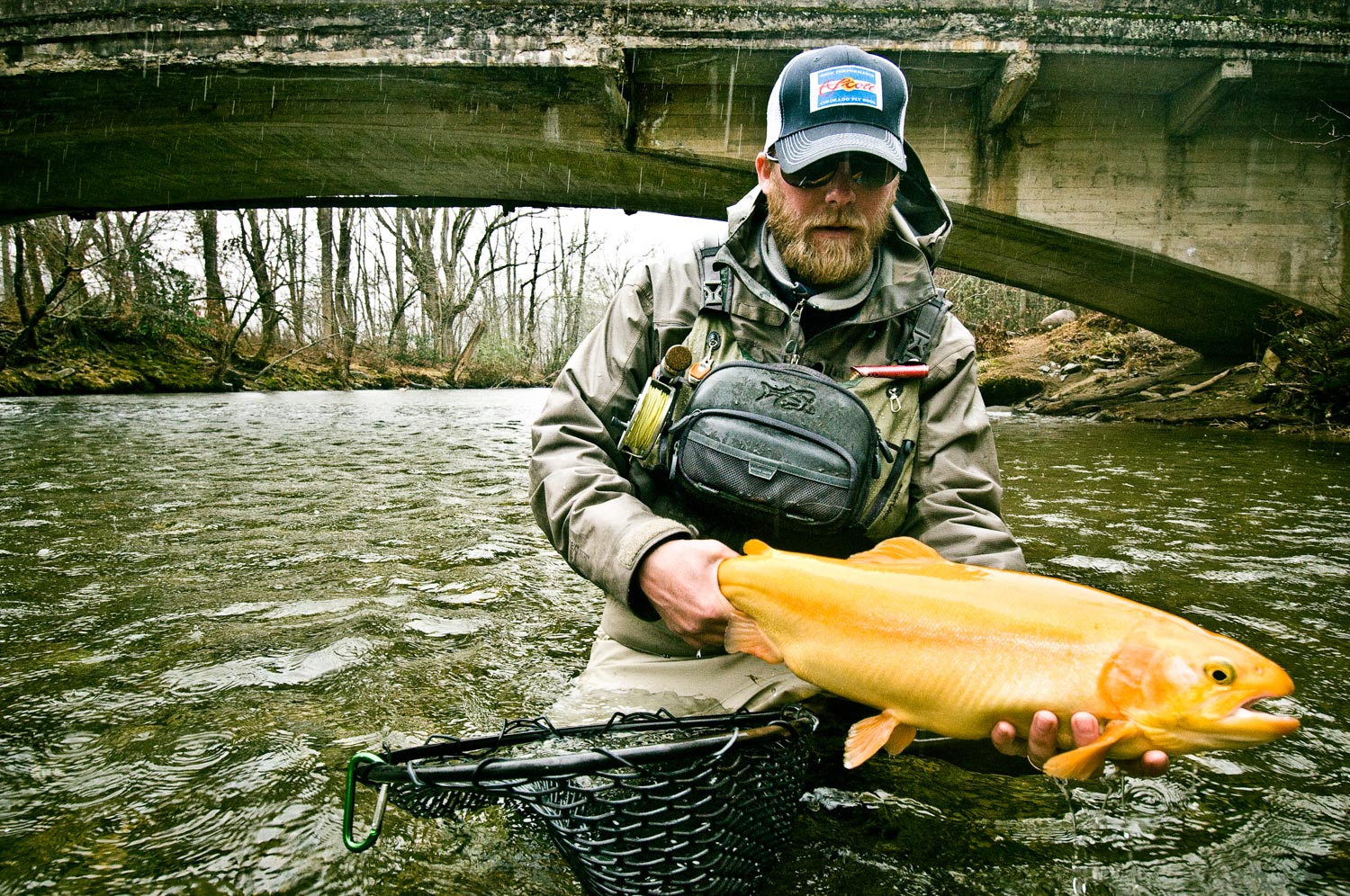
By Louis Cahill
About once a year I get an email from the editor of a fishing magazine saying, “I heard you have photos of golden trout.”
The answer is yes, but better than half the time the question is completely wrong. There seems to be a lot of confusion over exactly what is a golden trout, and the media has done it’s part to foster that confusion. In reality, the jury is not, in any way, out on the subject but more than half the time what they are referring to is actually a palomino trout, not a golden.
I say this meme on Instagram the other day and it made me think this was a good subject to help clarify. A palomino trout is actually an albino rainbow trout. though they do accuse in small numbers in the wild, they are most commonly raised and stocked as a novelty in pay-to-play private waters. Feelings are widely split on these fish, who never asked to be called into existence. They are at once kind of cool and the highest level of bullshit. I’ll let you decide where you land in that debate. You can read more about palomino trout here.
Golden trout on the other hand, are something truly special.
Native to the Kern River drainage in California, this unique and rare subspecies of rainbow trout is one of the most beautiful fish you will ever see. They exist a few places outside their native range, notably in the Wind River Range of Wyoming and are known to be extremely elusive. The golden trout likely tops the list of
Read More »